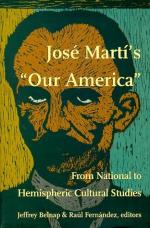|
This section contains 13,039 words (approx. 44 pages at 300 words per page) |

|
SOURCE: "The Definition and Unification of a Revolutionary Movement," in The Rhetorical Uses of the Authorizing Figure: Fidel Castro and José Martí, Praeger Publishers, 1992, pp. 35-73.
In the following excerpt, Rice looks at Martí as a historical figure in general and as the specific historical figure Fidel Castro drew on to lend authority to his revolutionary goals.
Most critics agree that movements have beginnings. Most do not agree that they know what a beginning is. They frequently disagree about whether or not there are discernible demarcations of beginnings or stages that may be isolated and analyzed. Yet, somehow, it seems that movements are initiated. We may be mystified as to when it can be said that a movement becomes a movement, but in spite of this enigma, we continue to study the process of social change because we believe that an understanding of that process is worthwhile.
I...
|
This section contains 13,039 words (approx. 44 pages at 300 words per page) |

|


